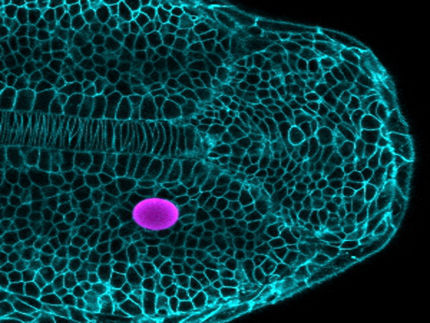A*STAR Scientists Make Groundbreaking Discovery on Stem Cell Regulation
A*STAR scientists have for the first time, identified that precise regulation of polyamine levels is critical for embryonic stem cell (ESC) self-renewal - the ability of ESCs to divide indefinitely - and directed differentiation. This paper is crucial for better understanding of ESC regulation and was published in the journal Genes & Development by the team of scientists from the Institute of Medical Biology (IMB), a research institute under the Agency for Science, Technology and Research (A*STAR).
Embryonic stem cells hold great potential for the development of cellular therapies, where stem cells are used to repair tissue damaged by disease or trauma. This is due to their unique ability to renew themselves and differentiate into any specific types of cell in the body. One of the challenges with cellular therapies is ensuring that ESCs are fully and efficiently differentiated into the correct cell type. This study sheds light on understanding how ESCs are regulated, which is essential to overcome these challenges and turn the vision of cell therapies into reality.
Using a mouse model, the team of scientists from IMB showed that high levels of Amd1 , a key enzyme in the polyamine synthesis pathway, is essential for maintenance of the ESC state and self renewal of ESCs. To further demonstrate the critical role of Amd1 in ESC self-renewal, the scientists showed that increasing Amd1 levels led to delayed ESC differentiation. The research also revealed that downregulation of Amd1 was necessary for differentiation of ESCs into neural precursor cells and that Amd1 is translationally regulated by a micro-RNA (miRNA), the first ever demonstration of miRNA-mediated regulation of the polyamine pathway.
While the polyamine pathway is well established and polyamines are known to be important in cancer and cell proliferation, their role in ESC regulation until now was unknown. This novel discovery, linking polyamine regulation to ESC biology, came about when the team set up a genome-wide screen to look for mRNAs under translational control in order to identify new regulators of ESC differentiation to neural precursor cells.
Dr Leah Vardy, Principle Investigator at the IMB and lead author of the paper, said, "The polyamines that Amd1 regulate have the potential to regulate many different aspects of self renewal and differentiation. The next step is to understand in more detail the molecular targets of these polyamines both in embryonic stem cells and cells differentiating to different cellular lineages. It is possible that manipulation of polyamine levels in embryonic stem cells through inhibitors or activators of the pathway could help direct the differentiation of embryonic stem cells to more clinically useful cell types."
Prof. Birgitte Lane, Executive Director of IMB, said, "This is a fine piece of fundamental research that will have breakthrough consequences in many areas and can bring about far-reaching applications. Developing cellular therapies is just one long-term clinical benefit of understanding ESC biology, which can also help develop stem cell systems for disease modeling, developing new drugs as well as a tool for researchers to answer other biological questions."
Original publication
Dawei Zhang, Tianyun Zhao, Haw Siang Ang, Peini Chong, Ryotaro Saiki, Kazuei Igarashi, Henry Yang, and Leah A. Vardy; "AMD1 is essential for ESC self-renewal and is translationally down-regulated on differentiation to neural precursor cells"; Genes and Development.
Original publication
Dawei Zhang, Tianyun Zhao, Haw Siang Ang, Peini Chong, Ryotaro Saiki, Kazuei Igarashi, Henry Yang, and Leah A. Vardy; "AMD1 is essential for ESC self-renewal and is translationally down-regulated on differentiation to neural precursor cells"; Genes and Development.
Other news from the department science

Get the life science industry in your inbox
By submitting this form you agree that LUMITOS AG will send you the newsletter(s) selected above by email. Your data will not be passed on to third parties. Your data will be stored and processed in accordance with our data protection regulations. LUMITOS may contact you by email for the purpose of advertising or market and opinion surveys. You can revoke your consent at any time without giving reasons to LUMITOS AG, Ernst-Augustin-Str. 2, 12489 Berlin, Germany or by e-mail at revoke@lumitos.com with effect for the future. In addition, each email contains a link to unsubscribe from the corresponding newsletter.



















































